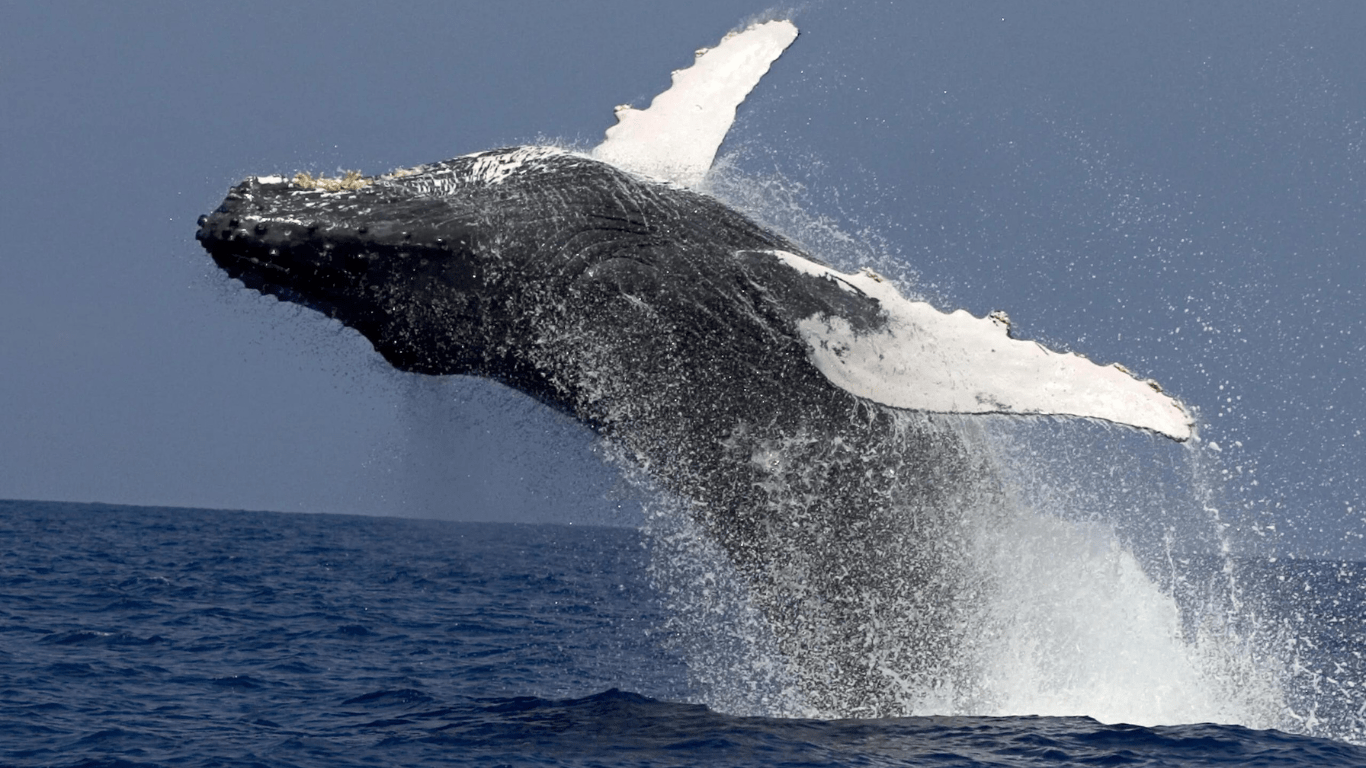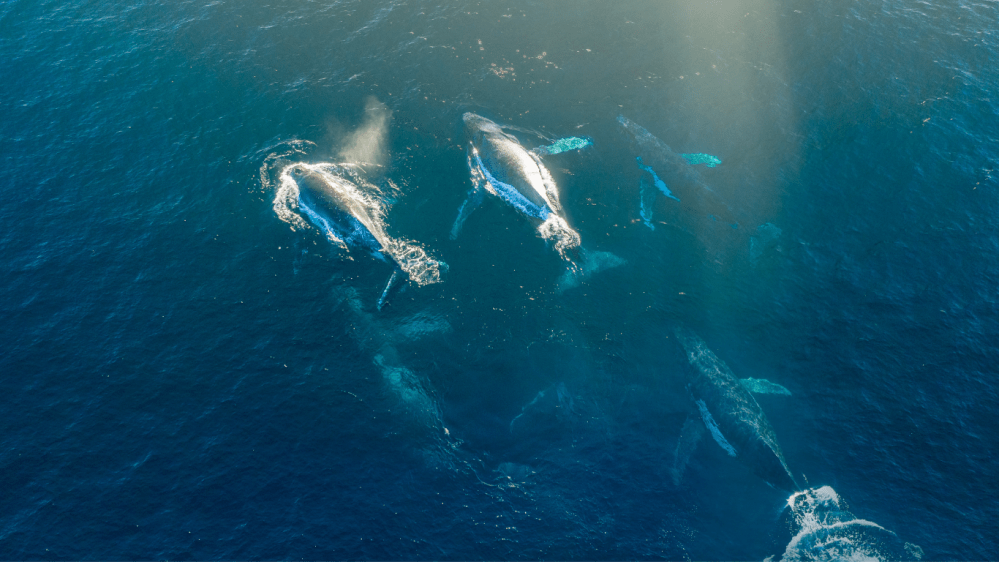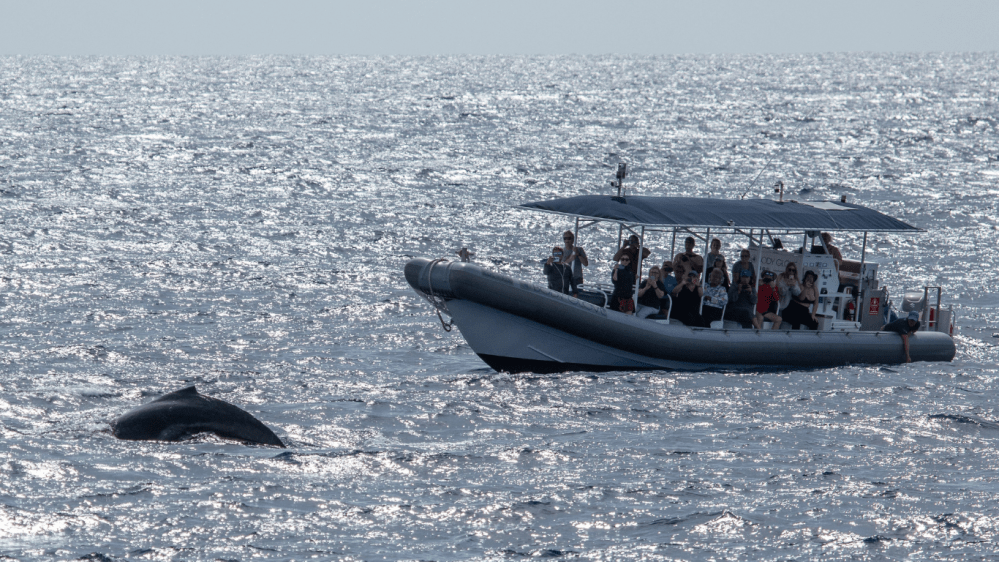Whale Season in Hawaii & the Humpback Migration

Picture this: a 40-ton humpback whale launching itself out of the ocean just yards from where you’re standing. It’s a jaw-dropping moment that happens thousands of times each winter during Hawaii’s famous whale season. As North Pacific humpbacks complete their epic migration from Alaska to Hawaii, the islands become one of the world’s top whale-watching spots.
These magnificent creatures represent one of conservation’s greatest success stories: humpback whales were removed from the endangered species list in 2016 after their population rebounded from approximately 6,000 individuals twenty years ago to an estimated 21,000 today. While they’re no longer considered endangered, they remain protected under the Marine Mammal Protection Act, making every whale encounter during the Hawaii whale migration a celebration of nature’s incredible comeback.
Whether you’re planning your first whale watching adventure or you’re a marine life pro, this guide will help you make the most of whale season in Hawaii.
- When is Whale Season in Hawaii?
- Why Do Whales Migrate to Hawaii?
- How to Experience Hawaii’s Whale Migration
- Frequently Asked Questions About Whale Season in Hawaii
When is Whale Season in Hawaii?
The official whale season in Hawaii runs from December 15th through April 15th, with the peak viewing period occurring from late January to early March. During these magical months, an estimated 10,000 humpback whales grace Hawaiian waters with their presence.
What makes this timing perfect?
The whales arrive in Hawaii when the water temperatures are ideal for calving and mating. The warm tropical waters provide a safe haven for new mothers to give birth and care for their calves before making the long journey back north.
Why Do Whales Migrate to Hawaii?
The Hawaii whale migration is one of nature’s most impressive journeys. These incredible marine mammals travel approximately 3,500 miles from their feeding grounds in Alaska to reach Hawaiian waters. But why do they make such an epic trek?
Hawaii’s warm, calm waters create ideal conditions for:
- Birthing and nursing calves – The protected bays and channels provide safe spaces for vulnerable newborns
- Mating season activities – Adult whales engage in complex courtship behaviors in these tropical waters
- Energy conservation – The warmer water requires less energy to maintain body temperature
When it’s time to return to Alaska, the new mothers and their calves are typically the first to leave Hawaiian waters. During their northern migration, these magnificent creatures will feast on up to 2,000 pounds of small fish, krill, and other marine organisms each day to replenish the energy reserves they depleted during their time in Hawaii.
How to Experience Hawaii’s Whale Migration
What to Expect During Whale Season in Hawaii: Spectacular Whale Behaviors
Get ready for some jaw-dropping moments! During whale watching season, you’ll have the chance to witness incredible whale behaviors, including:
- Breaching: Whales launching their massive bodies completely out of the water.
- Tail Slapping: Powerful displays where whales strike the surface with their flukes.
- Spy Hopping: When whales poke their heads vertically above the water to get a better view.
- Singing: Male humpbacks produce complex songs that can travel for miles underwater.
Ultimate Whale Watching: The Super-Raft Adventure
While it’s possible to spot whales from the shore, nothing compares to seeing these gentle giants up close on the water. Body Glove Hawaii’s Super-Raft Whale Watching Experience offers the ultimate way to witness the Hawaii whale migration.
Why Choose the Super-Raft Experience?
- Speed and Agility: Our 41-foot super-raft can reach the areas where whales are most active, ensuring you don’t miss any of the action.
- Unmatched Comfort: Unlike other rafts, our vessel offers:
- Comfortable seating for all passengers
- Plenty of shade to keep you cool under the tropical sun
- An onboard restroom for added convenience
- Departures from Kailua Pier for easy access
- Expert Guidance: Every tour includes narration from a Marine Naturalist who will share fascinating insights into whale behavior, migration patterns, and conservation efforts.
- Whale Sightings Guarantee: We’re so confident in our whale watching experience that if you don’t see whales, we’ll let you come back for free!
Tour Details:
- Duration: 2.5 hours of whale-watching excitement
- Departure: 1:30 PM from Kailua Pier
- Season: Available December through April (prime whale season)
- Age Requirements: Children 6+ welcome (no pregnant women or children under 5 due to the exciting nature of the ride)
- Includes: Water, soft drinks, snacks, sunscreen, and expert narration
Frequently Asked Questions About Whale Season in Hawaii
When is the best time to see whales in Hawaii?
The peak whale season in Hawaii occurs from late January to early March, when whale activity is at its highest. However, you can spot whales throughout the official season from December 15th to April 15th.
Where are the best places to see whales in Hawaii?
The Big Island offers some of the most spectacular whale watching opportunities in Hawaii! Kona’s calm, leeward waters are particularly ideal for whale watching, which is why Body Glove Hawaii’s Super-Raft tours depart from Kailua Pier. The protected waters along the Kona coast provide excellent visibility and calmer conditions for both whales and whale watchers.
Other prime whale watching locations in Hawaii include:
- Maui’s Lahaina area – Known for frequent whale sightings
- The channel between Maui, Molokai, and Lanai – A popular whale nursery area
- Oahu’s south and west shores – Particularly around Diamond Head and the Waianae coast
- From shore: Elevated viewpoints like Pu’u Pehe (Sweetheart Rock) on Lanai or various coastal lookouts
The Big Island’s Kona coast stands out because the deep waters close to shore create perfect conditions for whale watching tours.
When is the best time of day to see whales?
Humpback whales are active throughout the day during whale season in Hawaii, so any time you’re on the water offers great potential for incredible encounters! Ocean conditions are typically calmer in the morning, leading to a comfortable whale watching experience. Afternoons provide better temperatures and less crowded waters.
How far do whales travel during the Hawaii whale migration?
Humpback whales travel approximately 3,500 miles from their feeding grounds in Alaska to Hawaiian waters – one of the longest migrations of any mammal on Earth!
Can you see whales from the beach during whale season?
Yes! While whale watching tours offer the best viewing experience, you can sometimes spot whales from shore during whale season in Hawaii, especially from elevated viewpoints along the coast.
How close can boats get to whales in Hawaii?
Federal law requires all vessels to maintain at least 100 yards distance from humpback whales. This protects both the whales and ensures a sustainable whale watching experience for everyone.
What should I bring on a whale watching tour?
Most reputable tours provide sunscreen, water, and snacks. We recommend bringing:
- Sunglasses and a hat
- Camera or smartphone for photos
- Light jacket (it can be breezy on the water)
- Motion sickness medication if you’re prone to seasickness
How many whales visit Hawaii each year?
During peak whale season in Hawaii, an estimated 10,000 North Pacific humpback whales make the journey to Hawaiian waters.
Planning Your Hawaii Whale Migration Experience
Want front-row seats to one of nature’s greatest shows? Body Glove Hawaii’s Super-Raft Whale Watching Experience blends adventure, education, and conservation for an unforgettable journey. Reserve your spot today and get ready to meet the gentle giants of the Pacific as they return to Hawaii’s warm, welcoming waters.
A hui hou, whales!




